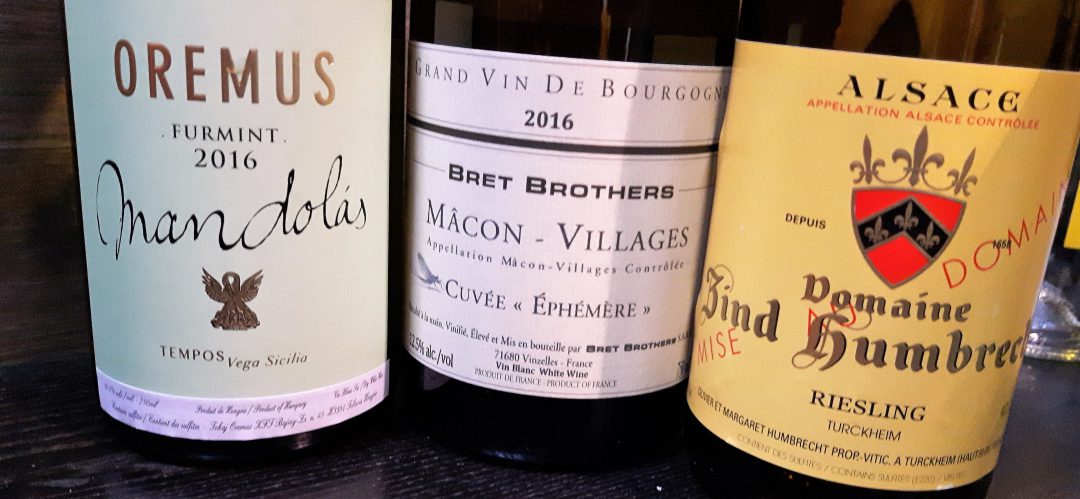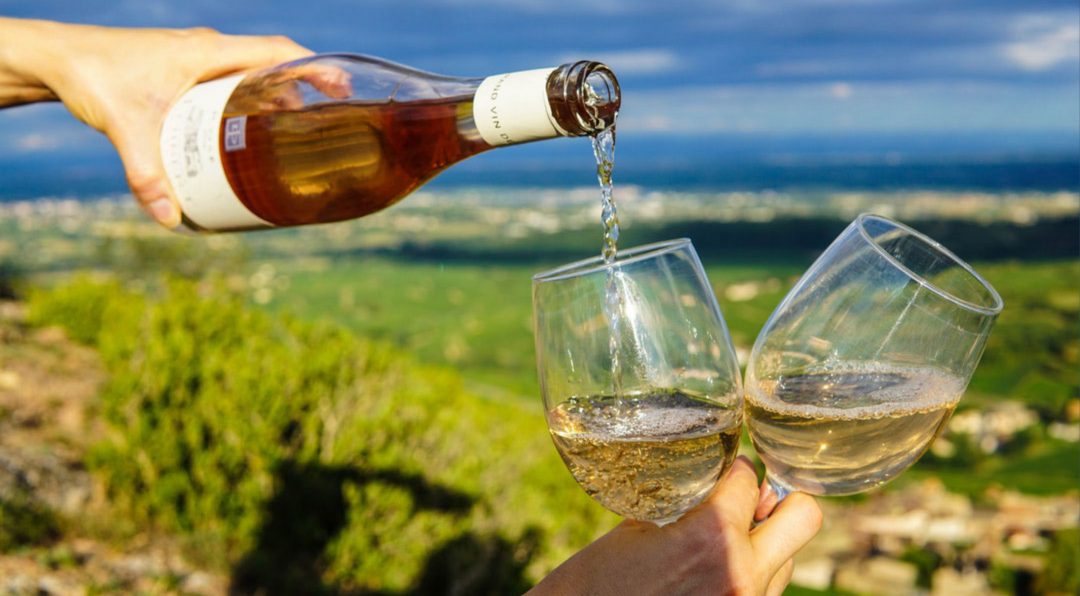What do experts mean when they praise acidity in wine? Critics regularly enthuse about the racy acid of a German Riesling or the lively, crisp nature of a New Zealand Sauvignon Blanc. Why is acidity so important in wine appreciation?
According to tasting expert Michael Schuster in his excellent, Essential Winetasting book: “Acidity shapes and puts into relief the flavours in wine”. Consider a well-made Beaujolais or Burgundian Pinot Noir. The red berry and cherry notes seem to pop on the palate. This is due to the acidity in wine lifting and highlighting the fruit; giving it a juicy, tangy quality.
***Side note: I have also made this “Acidity in Wine” post into a three minute YouTube video. To watch, just scroll down to the bottom & click play. If you enjoy the video, consider subscribing to my YouTube channel so you never miss an episode of my weekly wine education series.
“Acidity shapes and puts into relief the flavours in wine”.
Acidity in wine is a crucial component for balance. Low acid wines – think cheap Viognier from a hot region – can feel flat and heavy. Sweeter wine styles lacking sufficient acidity are cloying. High alcohol wines, without freshness, appear almost thick on the palate and warming on the finish.
Balance is the ultimate gauge of wine quality. When all components that make up a wine’s character – its flavours, body, acidity, alcohol, dryness/sweetness, tannin, etc. – are in harmony, you may barely even perceive them individually. Rather, they coalesce to form a cohesive whole.
Acidity is a crucial factor in wine balance…though what constitutes balance is entirely personal…
What constitutes balance, when it comes to acidity in wine, is entirely personal however. High acid white wines like Riesling or Sauvignon Blanc can appear pleasant to some, and aggressive to others. The combination of high acidity and a very dry palate (˂2 grams/litre of residual sugar) can appear particularly austere to many tasters.
Residual sugar (occurring when fermentation is stopped before transforming all grape sugars into alcohol) can be a good thing for highly acidic wines, softening their sharp edges. It may surprise you how many notoriously high acid, seemingly dry wines are actually slightly sweet. Champagne, Riesling from multiple origins, and many New Zealand Sauvignon Blanc are just a few examples.
The capacity of a wine to age well is also greatly impacted by its acidity; notably when it comes to white wine. Acidity in wine acts like a preservative, significantly slowing down oxidation and playing a role in bacterial stability.
The capacity of a wine to age well is also greatly impacted by its acidity; notably when it comes to white wine.
It might be a little more apparent now why wine writers use so many terms to describe acidity in wine. In case you are wondering how to situate all of these weird and wonderful words on the scale of low to high acidity, I tend to use the following lexicon:
Low acidity: soft, lush, flabby, thick, heavy
Medium acidity: moderate, round
Medium + acidity: fresh, bright, lively, vibrant, brisk
High acidity: crisp, zesty, zippy, racy, bracing, piercing, laser-like, tangy, mouthwatering, steely, firm
Overly high acidity: sharp, jagged, tart, hard, malic, sour
Here is a selection of pleasingly balanced medium + to high acid wines that I have enjoyed recently:
(What do VW, PW, LW mean? Check out my wine scoring system to find out.)
Man Vintners Chenin Blanc Free-run Steen 2017, Western Cape, South Africa – 88pts VW
Attractive notes of yellow fruit are underscored by steely, mineral hints on the nose. Zesty acidity is matched by a taut structure and vibrant, ripe lemon flavours on this light bodied, unoaked Chenin Blanc. Clean and citrussy on the finish. For more on the Chenin Blanc grape, click here.
Where to buy: SAQ (17.05$)
Paco & Lola Albarino 2017, Rias Baixas, Spain – 89pts. VW
Not as exuberantly fruit forward as certain Albariños, but very pleasant all the same. Bright floral aromas mingle with candied white fruits (apple, pear, peach). Light in body, this crisp, yet rounded easy-drinking white features tangy orchard fruit flavours and saline hints on the finish. For more on the Spanish grape: Albariño click here and scroll down to the 4th paragraph (on Galicia).
Where to buy: SAQ (18.20$), LCBO (19.95$)
Domaine des Fines Caillottes Pouilly Fumé 2017, Loire Valley, France – 91pts. PW
I liked this so much in a recent blind tasting that I immediately went out to buy another bottle. Drinking very well now despite its youthful vigour, this aromatic Loire Valley Sauvignon Blanc is brimming with gooseberry, tropical fruit, and grapefruit notes. Upon aeration herbaceous nuances and hints of oyster shell develop. Bracing acidity is ably balanced by the medium body and expansive palate structure. Bone-dry and unoaked, with a long, lively finish.
Where to buy: SAQ (26.40$)
Zind-Humbrecht Riesling Turkheim 2016, Alsace, France – 93pts. PW
Fantastic value for the price. Intensely fragrant and complex, with spicy aromas (cinnamon, clove, and star anise) overlaying yellow fruits, white flowers, and wet stone nuances. The medium bodied, earthy palate is lifted by pure, racy acidity and a steely structure. Mineral hints and bright yellow fruis linger on the finish.
Where to buy: SAQ (27.10$)
Oremus “Mandolas” 2016, Tokaj, Hungary – 92pts. PW
This wine is made from the Furmint grape in the Tokaj region of Hungary, better known for their sweet, botrytised Tokaji wines. An incredibly stylish wine with intriguing hints of fennel, anise, and lemon on the nose. Crisp and highly textural on the palate, with medium body and a concentrated core of lemon, quince and orchard fruit. An attractive touch of phenolic bitterness frames the long finish nicely.
Where to buy: SAQ (30.25$)
Bret Brothers Mâcon-Villages “Cuvée Ephémère” 2016, Burgundy, France – 93pts. PW
I have yet to be disappointed by a wine from this producer. This lovely Mâcon is no exception. Lovely honeysuckle, yellow peach, and stony mineral notes feature on the nose. The palate is brisk, full-bodied and richly textured with good depth of flavour (yellow apple, peach, mango hints). The fruit is tangy and bright on the long, mineral-laced finish.
Where to buy: SAQ (35.50$)
Château Thivin Côte de Brouilly Cuvée Les Sept Vignes 2016, Beaujolais, France – 91pts PW
I tasted this first at the domaine earlier this summer, and subsequently bought a bottle upon returning home. Firstly, because it was so good. Secondly, because it was the same price at the cellar door and here! This wonderfully lively red features brisk acidity, and juicy red berry, cherry, violet, and spiced flavours. It is medium bodied, with earthy hints from ageing in oak oak foudres, and lovely, velvety tannins. Serve slightly chilled.
Where to buy: SAQ (24.55$)
Castello di Monsanto Chianti Classico Riserva 2014, Tuscany, Italy – 92pts. PW
I tasted a series of Chianti from this producer recently, including an exquisite 2013 ‘Vignetto Il Poggio” that was pretty darn near perfection in my humble opinion. Sadly, the 99$ price of this wine is a little out of my reach…sigh. For less than half that price, this Chianti Classico Riserva is really fantastic. Enticing aromas of sweet, stewed tomatoes, red cherry, dried herbs, and potpourri feature on the nose. Very fresh on the palate, with a lovely chalky texture, medium body, and spicy, cedar hints. The tannins are still a little firm. Cellar for 2 – 3 years, or serve with red meat to soften the tannins.
Where to buy: SAQ (35.25$), inquire with agent about the “Il Poggio” 2013: Elixirs Vins & Spiritueux
Acidity in Wine & Why it Matters Video!


